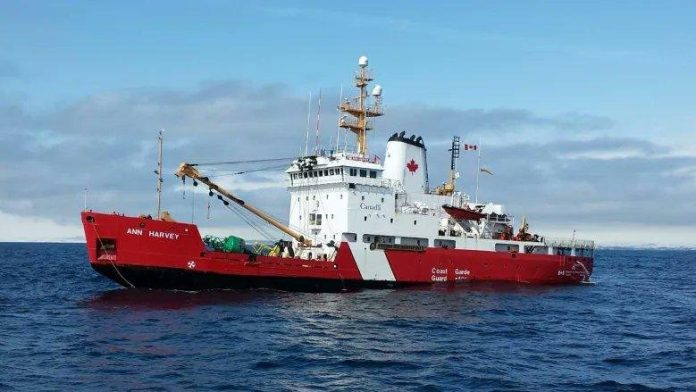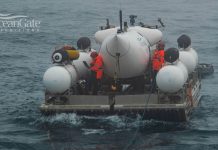
June 22 (UPI) — Both the U.S. Coast Guard and the company that operates a missing submersible said Thursday that all five people aboard the deep-water vessel are believed to be dead.
“We now believe that our CEO Stockton Rush, Shahzada Dawood and his son Suleman Dawood, Hamish Harding, and Paul-Henri Nargeolet, have sadly been lost,” dive company OceanGate said in a statement.
U.S. Coast Guard officials said that debris that had been discovered was consistent with the “catastrophic loss of the pressure chamber.”
“On behalf of the United States Coast Guard, and the entire unified command, I offer my deepest condolences to the families,” Rear Adm. John Mauger said.
Mauger added that determining the specific timeline of events would take some time.
The Coast Guard had said earlier Thursday that debris from the vessel had been found as two Canadian ships joined the search.
The icebreaker Ann Harvey had joined the scene, alongside a Motor Vessel Horizon Arctic recovery vessel, joining multiple other ships from the United States and France in a desperate search for the vessel named Titan, which never resurfaced from the ocean floor on Sunday, according to a statement by the U.S. Coast Guard headquarters in Boston.
The day before, a French ship arrived with a remote-operated underwater vehicle to search the sea bed in an area where sonar had detected banging noises over the past two days.
The submersible, called Victor 6000, was working in four-hour shifts and guided by a team of two pilots on a surface ship. The rover is equipped with a pair of robot arms and lights that can penetrate the darkness of the abyss, providing real-time camera analysis from 2.5 miles below.
Mauger said that they were thankful for all the support and help they received.
“The outpouring of support in this highly complex search operation has been robust and immensely appreciated. We are grateful for the rapid mobilization of experts on the undersea search and rescue, and we thank all of the agencies and personnel for their role in the response. We’re also incredibly grateful for the full spectrum of international assistance that’s been provided,” he said Thursday.
There had been no sign of the tiny Titan vessel, while many close to the search were hoping for a miracle that it would be found in time to save the passengers. Coast Guard officials estimated the crew was due to run out of oxygen just before 7:10 a.m. EDT Thursday after more than four days underwater.
“Although it’s a desperate situation, there’s hope, and you have to stay optimistic for as long as possible,” said Rob Larter of the British Antarctic Survey, noting the search area had not narrowed to the area where sounds were picked up. “Every step takes time and time is what we are running out of.”
The search expanded Wednesday to an area about twice the size of Connecticut 370 miles off the coast of Newfoundland, where the Titanic hit an iceberg and sank on its maiden voyage more than 111 years ago.
The Canadian Coast Guard boat John Cabot also joined the search on Wednesday, along with commercial vessels Skandi Vinland and the Atlantic Merlin, while at least seven other vessels were en route, according to the U.S. Coast Guard.
A Coast Guard C-130 crew also arrived to assist the operation.
A U.S. Navy deep ocean salvage ship with a lift system capable of recovering small vessels on the ocean floor was still days away from the search site.
Communication with Titan was lost Sunday nearly two hours into the dive.
By Thursday, the vessel had minimal oxygen remaining as international teams continued to scour the region around the clock.
On board are Hamish Harding, 58, a British aviator who has set world records; British businessman Shahzada Dawood, 48, and his 19-year-old son, Suleman; Stockton Rush, 61, CEO of OceanGate, which runs the Titanic voyages; and Paul-Henry Nargeolet, 77, a former French Navy diver who is the director of underwater research for the company that owns the salvage rights to the Titanic.
The Titanic disaster has long captured the imagination of historians and ocean explorers who have sought to piece together an accurate picture of what happened on that fateful night.
The wreckage of the Titanic was discovered in 1985 at a depth of about 12,500 feet.






